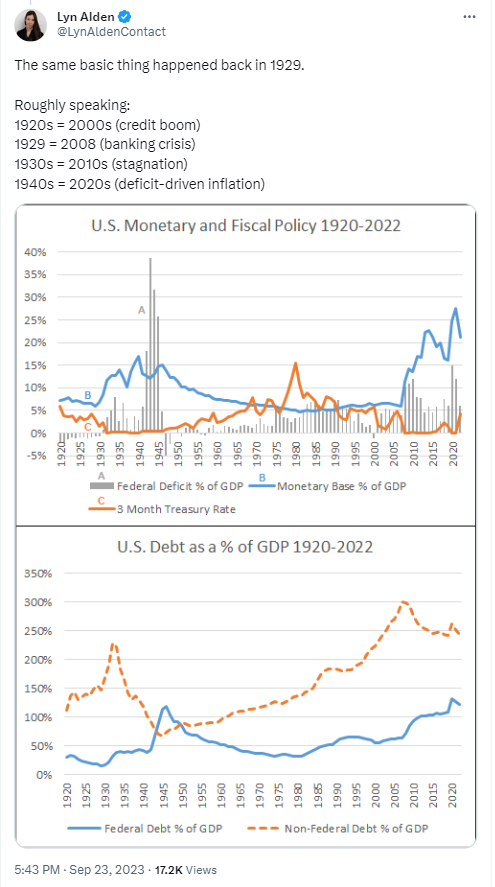Key Takeaways:
- The US Economy is showing signs of more financial crisis ahead.
- Analyst and author Lyn Alden has identified many similarities between the US Economy in the 1920s and the 2020s.
- The US has more debts to service than base money.

YEREVAN (CoinChapter.com) — Financial crises are not new to the world of economics. History often offers valuable insights into understanding their patterns and causes. Investment strategist Lyn Alden has drawn intriguing parallels between the 1920s and the 2020s financial crises.
Layden is the author of the book “Broken Money: Why Our Financial System is Failing Us and How We Can Make it Better.” She is also a vocal supporter of Bitcoin (BTC) and other cryptocurrencies.
In 2008, the world witnessed a devastating financial crisis characterized by the collapse of major banks and a global recession. According to her, policymakers faced a critical choice. They had to drastically reduce the number of debt claims or significantly increase the base money supply.
Their chosen path was the latter option, to increase base money.

Base money, or sovereign money, in finance refers to the physical currency countries use in the monetary system. It encompasses banknotes and coins in circulation within an economy, as well as the sight deposits held by commercial banks at central banks.
The country’s Central Bank is the sole body with the authority to create and distribute base money. It can influence economic conditions, such as inflation or deflation, by adjusting the quantity of base currency in circulation.
Printing more money in the US Financial Crisis
According to Lyn Alden, there was a disparity between contractual claims and the available base dollar. In particular, there were 64 claims for every dollar in base money. These contractual claims were in the form of debt securities and loans. As she points out, the scenario was ripe for a potential catastrophe.
To rectify the situation, authorities significantly increased the base money supply, thus effectively reducing the gap.

To avert a complete financial meltdown, policymakers in 2008 chose to increase the amount of base money, essentially printing more money. This influx of liquidity into the financial system helped stabilize the situation and prevent a complete collapse.
The analyst argues that the crisis in the 2000s was similar to the Great Depression in 1929.
In the 1920s, the credit boom preceded the infamous 1929 stock market crash, leading to the economic collapse of the 1930s. The subsequent decade was marked by economic stagnation.
Now, the analyst posits that the 2020s may mirror this historical pattern. The deficit-driven inflation, like the ones during the years of the Second World War, can potentially become a hallmark of the current era.

In essence, the tweets provide a fascinating perspective on the cyclical nature of financial crises. They highlight how excessive debt claims and the need for drastic measures, such as printing more money, have been recurring themes in economic turmoil.


